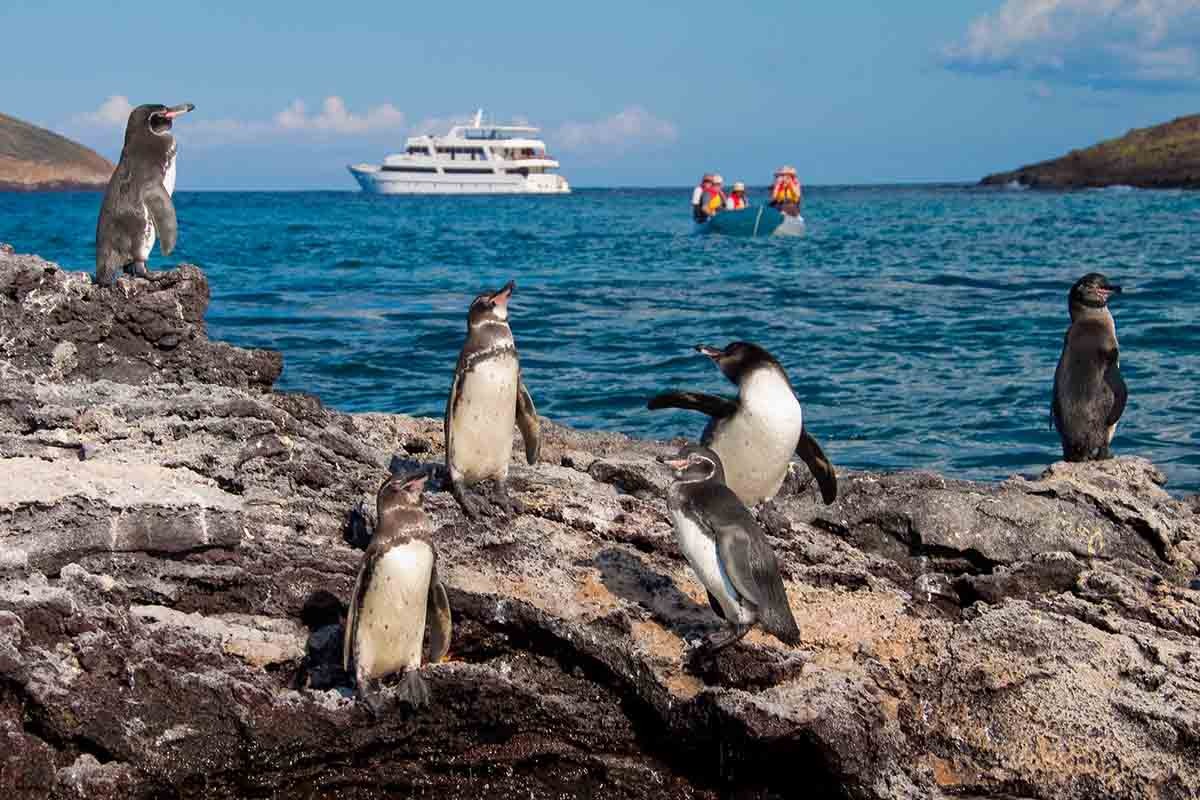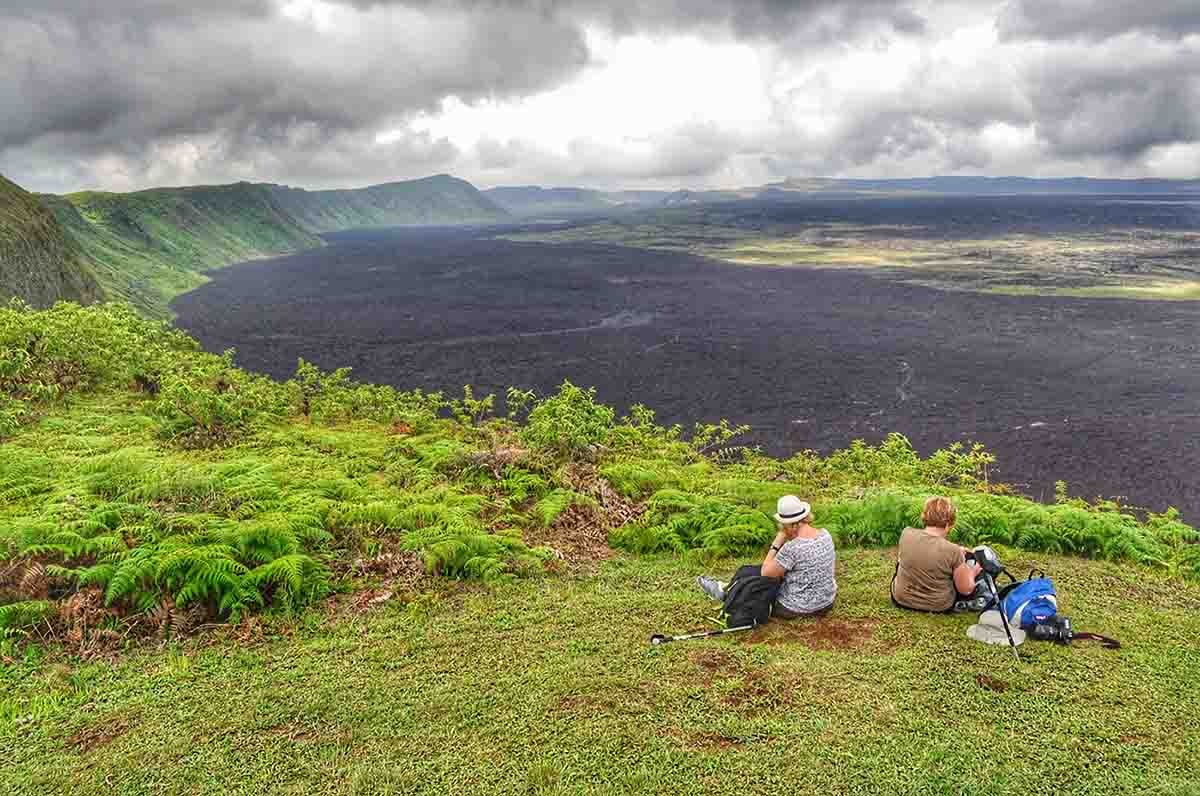If one could summarize the 5 day cruise itinerary offered by the Aida Maria yacht: "A packed program full of wildlife exploration in the remotest areas of the Galapagos islands". The loop covers the west and central islands of the archipelago, allowing guests to visit highights like Espinoza Point, Black Turtle Cove, Bartolome amongst other wildlife rich locations in less than a week.
Day by day
Map

Preview

Preview

Preview
Highlights
Walk along crowds of marine iguanas at Punta Espinoza
Lie down on the lava field at Sullivan bay and feel the volcanic energy
Swim with penguins, sea lions, turtles and other marine creatures at Bartolome island
Spot pink flamingos and enjoy a walk at the white sand beach at Las Bachas